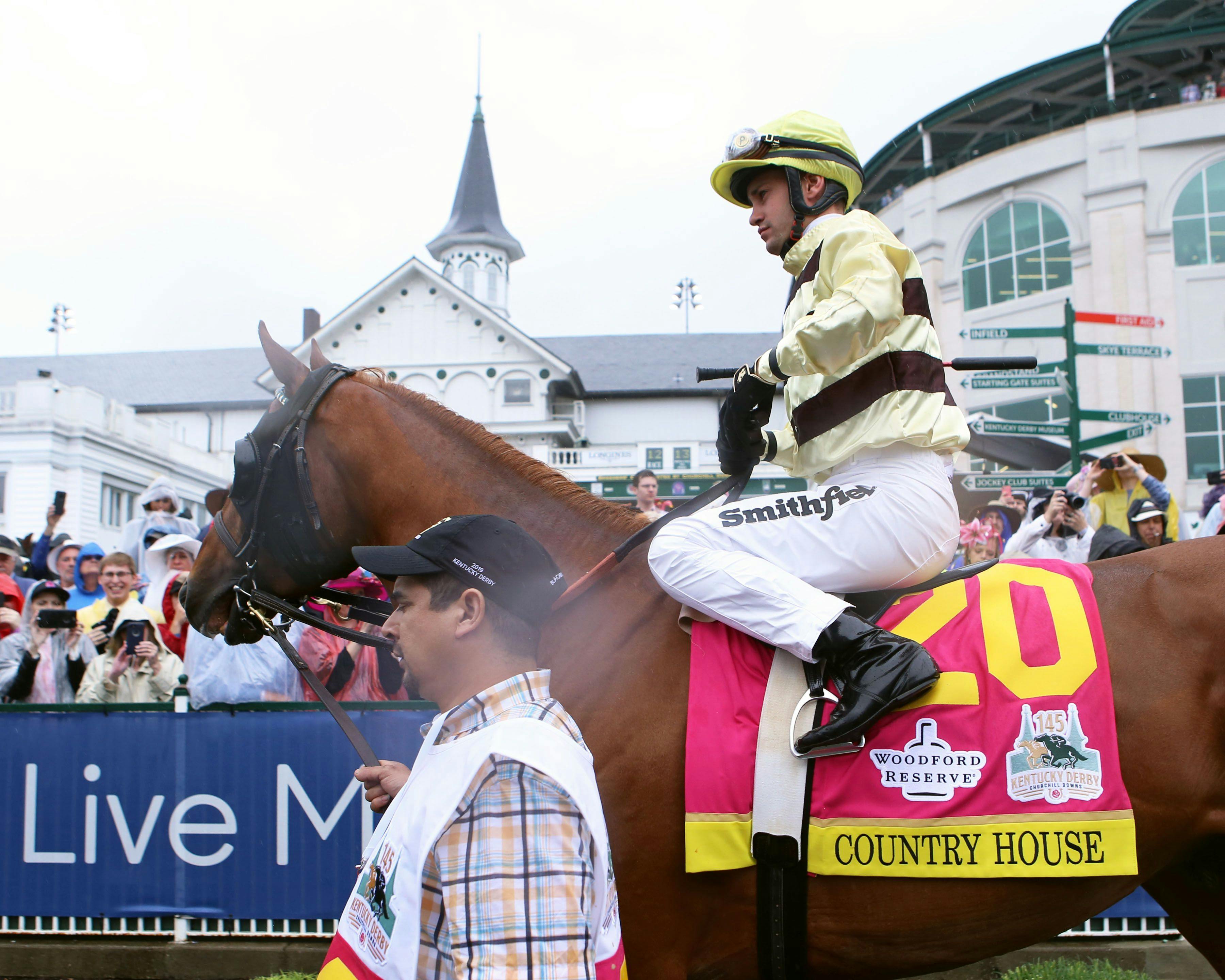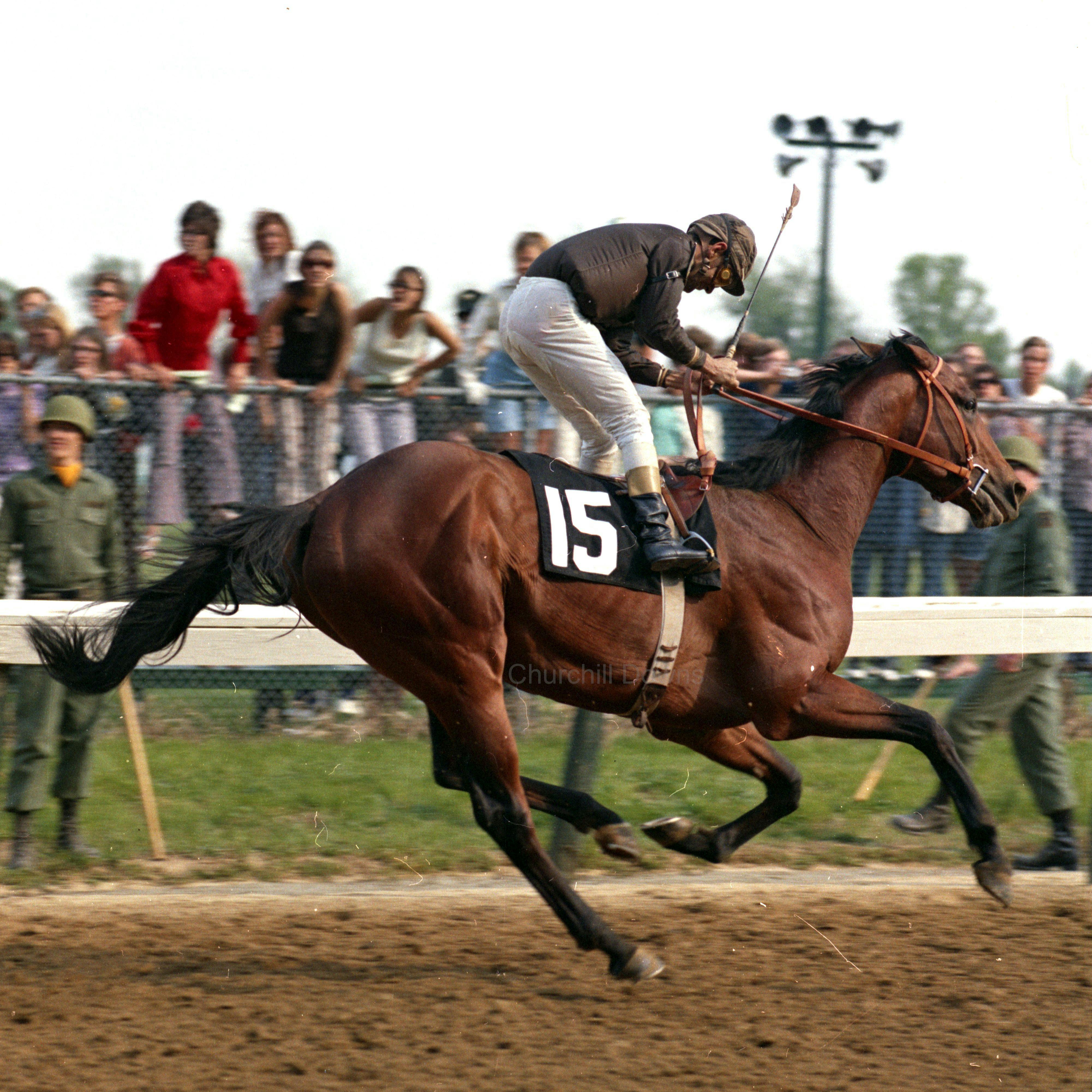Who was the biggest underdog ever to win the Kentucky Derby?

Donerail (Photo courtesy of the Kentucky Derby Museum/Churchill Downs)
Who was the biggest underdog ever to win the Kentucky Derby? It’s a simple question to ask, but perhaps not so simple to answer as you might think.
The easiest guideline for most people would be to choose the horse whose payoff in the win pool was the highest. For more than a century that distinction has belonged to Donerail, who returned $184.90 for every $2 wagered on him in 1913.
There are, however, major differences between then and now. Whereas (legal) betting in 1913 was limited to the 30,000 or so attendees on Derby Day at Churchill Downs, today millions throughout the country and the world are able to plunk down their money on the big race. Today’s bettors are also more sophisticated, with access to far more information on Derby participants than their predecessors could have possibly imagined.
Even with such advantages, several longshot winners have slipped through the cracks within the last two decades. Giacomo paid $102.60 after coming home first in 2005, while Mine That Bird followed four years later with an authoritative victory that resulted in a $103.20 mutuel.

Giacomo wins the 2005 Kentucky Derby (Photo courtesy of the Kentucky Derby Museum/Churchill Downs)
The upsets have only gotten bigger. Country House, who was elevated to first via disqualification in 2019, paid $132.40. And of course last year saw Rich Strike prove a modern day Donerail by returning $163.60, a reasonable reward on a horse whose only previous win had been against $30,000 maiden claimers.

Mine That Bird wins the 2009 Kentucky Derby (Photo courtesy of the Kentucky Derby/Churchill Downs)

Country House wins Kentucky Derby 145 (Photo by Coady Photography/Churchill Downs)

Rich Strike wins Kentucky Derby 148 (Photo by Coady Photography/Churchill Downs)
While the aforementioned were indeed significant underdogs, most weren’t facing an overwhelming favorite or even toppling a budding superstar or two. In fact, many underdog winners can be judged less on how much they paid but by who they beat.
For example, Gallahadion was only 36-1 when he captured the 1940 Derby, but it was a massive shocker as he beat the previously undefeated Bimelech, who was favored at 2-5. And one of the most famous of all Derby upsets occurred in 1953, when 25-1 Dark Star outran unlucky odds-on favorite Native Dancer, thus handing the Hall of Fame gray his only loss in a 22-race career.
Some underdog victories can only appear inscrutable after much time and retrospect, one example being Iron Liege’s in 1957. Although a decent horse, Iron Liege entered that Derby with no prior stakes win to his credit and as an 8-1 outsider after his more highly-regarded entrymate from the Calumet Farm stable, Gen. Duke, was scratched. That Iron Liege was able to outrun no less than three colts destined for the Hall of Fame (Gallant Man, Round Table, and Bold Ruler) was truly remarkable.
Although not necessarily underdogs on the day, several Kentucky Derby winners were lucky to make it to Churchill Downs at all after overcoming misfortune earlier in life. One of the best Derby winners of recent decades, Sunday Silence (1989), survived a near-fatal virus as a weanling and then nearly died as a yearling when the van he was traveling in flipped over after the driver suffered a heart attack.
Like Sunday Silence, 1936 Derby winner Bold Venture also escaped death’s clutches. As a two-year-old, when being transported from upstate New York to Long Island, Bold Venture was in a train car that caught fire. Only by having his head held out of an open door was he able to avoid smoke inhalation that claimed the lives of two stablemates.
Far more of a head scratcher than either of those was Count Turf, who in 1951 paid a mere $31.20 as part of the mutuel field, in which the least fancied entrants were coupled in the wagering. Count Turf had gone unplaced in seven consecutive starts leading up to the Derby, but ran the race of his life to become a rare third generation Derby winner, following in the hoofsteps of Reigh Count (1928) and Count Fleet (1943).

Canonero, II wins the 1971 Kentucky Derby (Photo courtesy of the Kentucky Derby Museum/Churchill Downs)
Another mutuel field winner was Canonero II (1971), who some argue was the most improbable of all. Except for a brief trip to California as a two-year-old, Canonero II did nearly all of his pre-Derby running in Venezuela, then and now an extremely rare proving ground for a top-class horse.
Not only had Canonero II been facing suspect South American opposition, but the colt also had to endure a horrific journey from Venezuela to Kentucky. Only arriving in Miami via cargo plane after two earlier flights were forced to turn back to Caracas due to mechanical issues, Canonero II then spent four sweltering days in quarantine. That was followed by a day-long van ride to Churchill Downs. Even when he arrived at the stable gate, it took some time before Canonero II was allowed to bed down while his paperwork was put in order.
Despite losing considerable weight after such a harrowing trip, Canonero II recovered sufficiently and subsequently embarrassed America’s best three-year-olds by 3 3/4 lengths. He soon became a folk hero to the burgeoning Hispanic population in the U.S. following a subsequent track-record performance in the Preakness.
Adding to Canonero II’s underdog mystique is that he cost a mere $1,200 at auction as a yearling. Even when adjusted for inflation, that comes out to less than $10,000 in today’s money, thus he remains one of the best bargain purchases ever to wear the garland of roses.
RELATED ARTICLES
- Kentucky Derby Odds: Live Odds & Latest Betting Favorites
- Kentucky Derby Contenders, Point Leaders & Top Horses to Watch
- The Best Longshot to Bet in the 2023 Kentucky Derby
- Kentucky Derby Betting Promos and Bonuses
- Kentucky Derby 2023 Purse: How much prize money the winning jockey will earn
- 2023 Kentucky Derby Live Updates, Latest News & Notes on Horses, Futures, Odds, Picks



